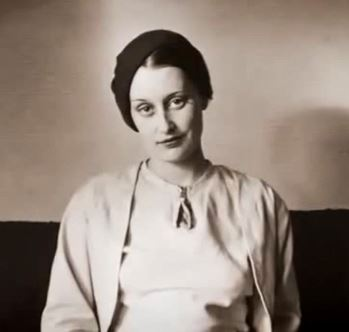In 1929, Christopher Isherwood traveled to Berlin on the advice of his childhood friend W.H. Auden, the poet. Like Auden, and many men his age, Isherwood developed an interest in economic justice and social reform. He saw Berlin as a way to explore social and economic ideas that weren't allowed anywhere else in the world.
The years between the wars saw an explosion of philosophy and art in Berlin. Its influence is still felt in the worlds of film, theater, painting, and music. It was the birthplace of German Expressionism. Berlin saw a great opening of the strata between class, culture, and sexuality. It was here that Isherwood discovered his own latent bisexuality.
In Berlin, Isherwood met a young English communist writer named Jean Ross. Ross was a very serious writer on topics of economic justice and feminism. She was a communist until she realized the communists weren't any more accepting of her feminist ideas than English capitalists, and she left the party to go out on her own.
Isherwood spent most of his days and nights in a basement bar called "The Cozy Corner," where he sometimes dated one of the busboys and where Ross would sometimes sing for extra money. It was Ross's singing that inspired Isherwood to create a character in his semi-autobiographical novel that became known as "Goodbye To Berlin," where Jean Ross became Sally Bowles.
 |
| Jean Ross The Real Sally Bowles |
John Van Druten saw potential in adapting the novel for the stage. After securing the rights, he worked with Isherwood to write "I Am A Camera," based on "Goodbye to Berlin," with Julie Harris as Sally Bowles. In 1955, "I Am a Camera" was produced as a film, starring Shelly Winters as Sally Bowles.
In 1965, Hal Prince saw the filmed version with Winters and thought maybe it would work as a musical since Bowles was a singer, and so much of the action took place in the Kit Kat Club. He brought in John Kander for music and Fred Ebb for lyrics. A team Prince would work with again.
A young Julie Andrews was offered the role of Sally Bowles, a part she wanted to play, but her management team rejected it because of the "immoral nature" of the play. Jill Hayworth accepted the role of Sally and Burt Convey as Cliff.
Prince changed the play considerably from "I Am A Camera." The antisemitic landlady became a more likable second lead, in love with a Jewish fruit seller. Their doomed love affair becomes almost the heart of the play.
A very young Joel Gray was hired as the Emcee. Originally, this character wasn't much of a character. He introduced the songs, and that's about it. Without much help from the script or his director, Gray struggled for ways to understand his character.
Ultimately, he decided that the Emcee could be something of a Greek Chorus, reminding the characters of the realities they faced, and not necessarily being on their side. Despite being married, with a child, Gray knew he was a gay man, and so did his wife. Together, they developed makeup and mannerisms that bring out an androgynous, almost brutal character. Prince, Kander, and Ebb all saw and encouraged Gray in what he was doing with the role and expanded his part to the point now where the Emcee is really the star of the show, more than Sally or Cliff.
With choreography by the famous Bob Fossee, Cabaret opened at the Broadhurst Theater in New York in 1966. Criticized for its "immoral content," the play wasn't a huge success financially, but it attracted a great deal of artistic attention. The West End production fared better and attracted Judi Dench as Sally, considered by many to be the best portrayal of the role yet.
Bob Fosse wanted very much to direct for film. His earlier effort, "Sweet Charity," didn't do well, but he used all his Broadway contacts to get the rights to "Cabaret" and funding for a shoot in Berlin. Considering the subplot about Schneider and Schultz as sentimental, he reduced their role in the story considerably and focused more on Cliff, Sally, and von Heune.
Fossee introduced a very young Liza Minnelli as Sally Bowles, who saw her part as much more cheerful than any of the previous incarnations. Fossee's interpretation of the story was a big hit, and several of the songs rose on the pop music charts. What was considered scandalous a few years before was "progressive" and "intellectual" in the seventies.
"Cabaret" works because you know what's coming. Even though none of it is shown, you know that all of these characters will either have to escape Berlin or die in the very near future. The original ending of the play leaves the audience looking at themselves in a twisted and distorted mirror. It made the point, but in the 1993 London revival, with Alan Cumming, they make the point even stronger, with each character reviving bits of their theme song, and in the very last moment, the Emcee, standing by himself where he takes off his coat revealing a concentration camp uniform, with a yellow star and a pink triangle. Known for his facial expressions, Cumming leaves the audience with a fierce accusatory stare.
Sometimes, I see in today's world what I saw in the Berlin Stories. Surely this can't happen again.


No comments:
Post a Comment